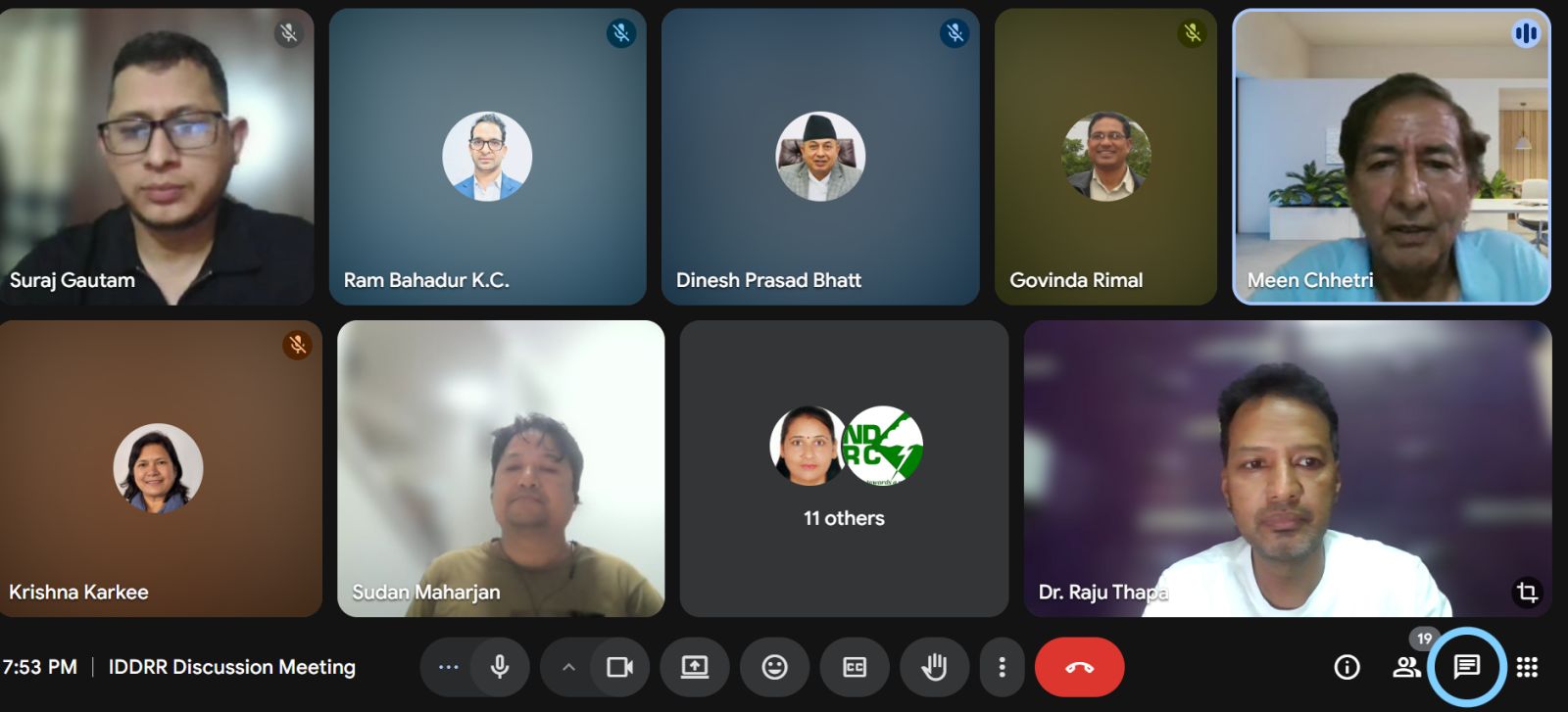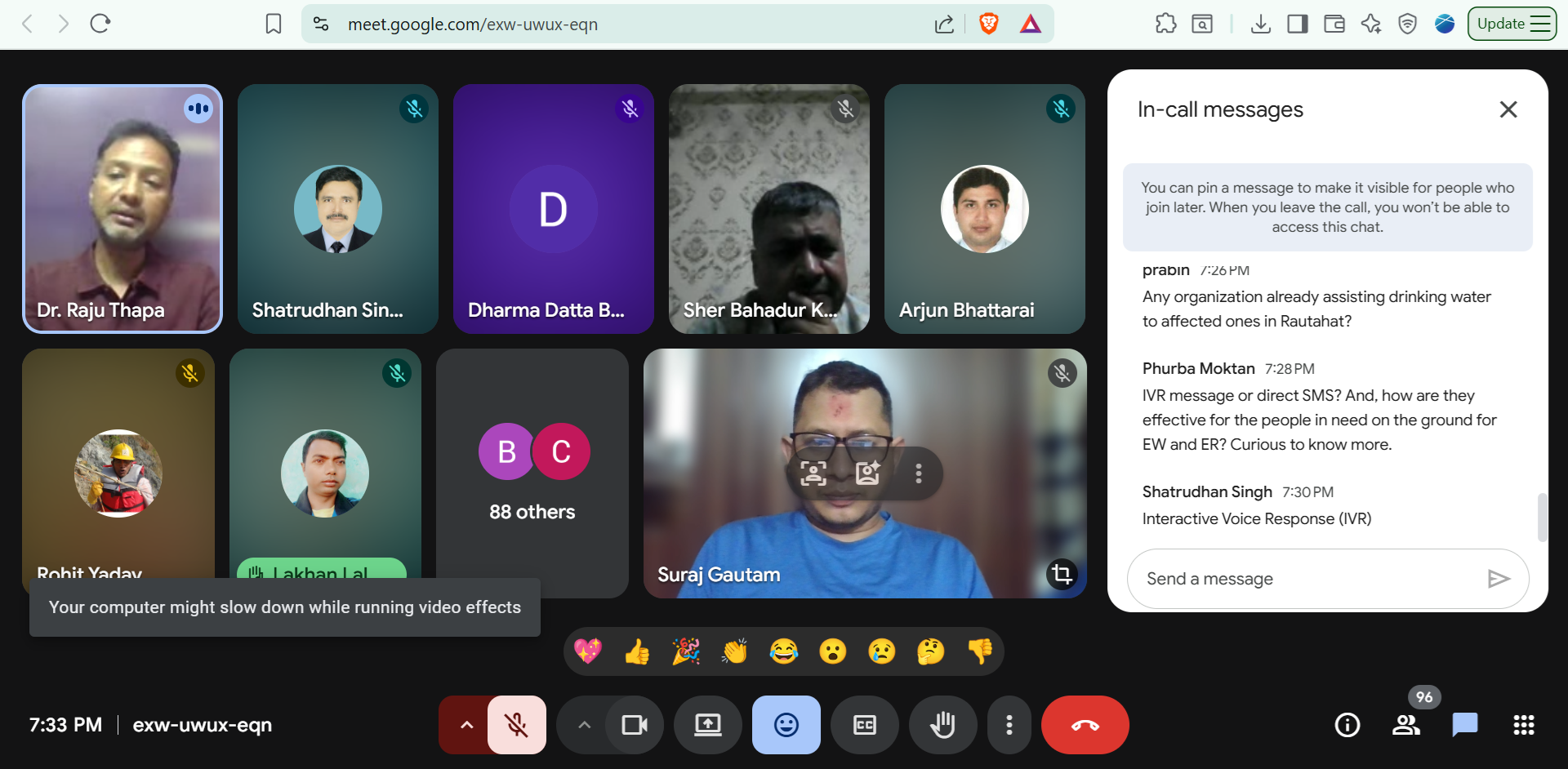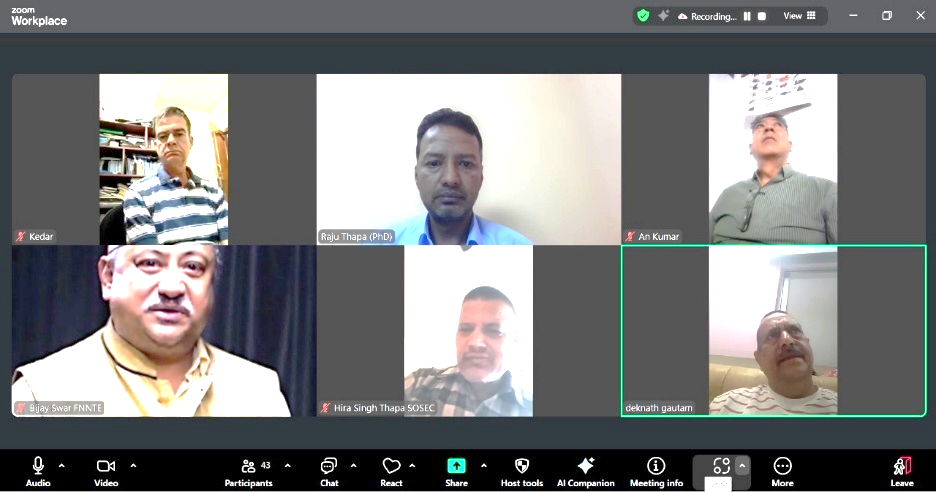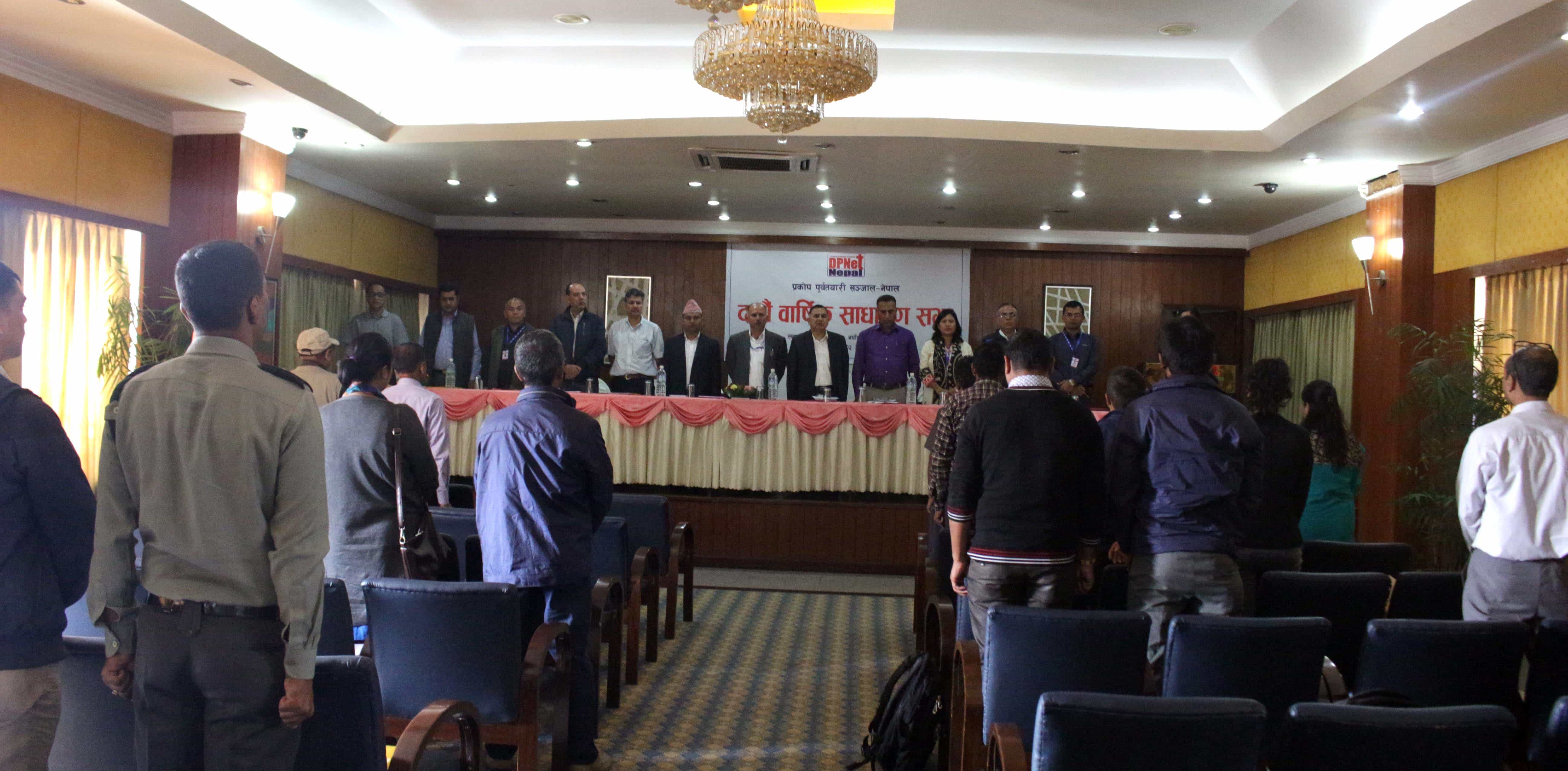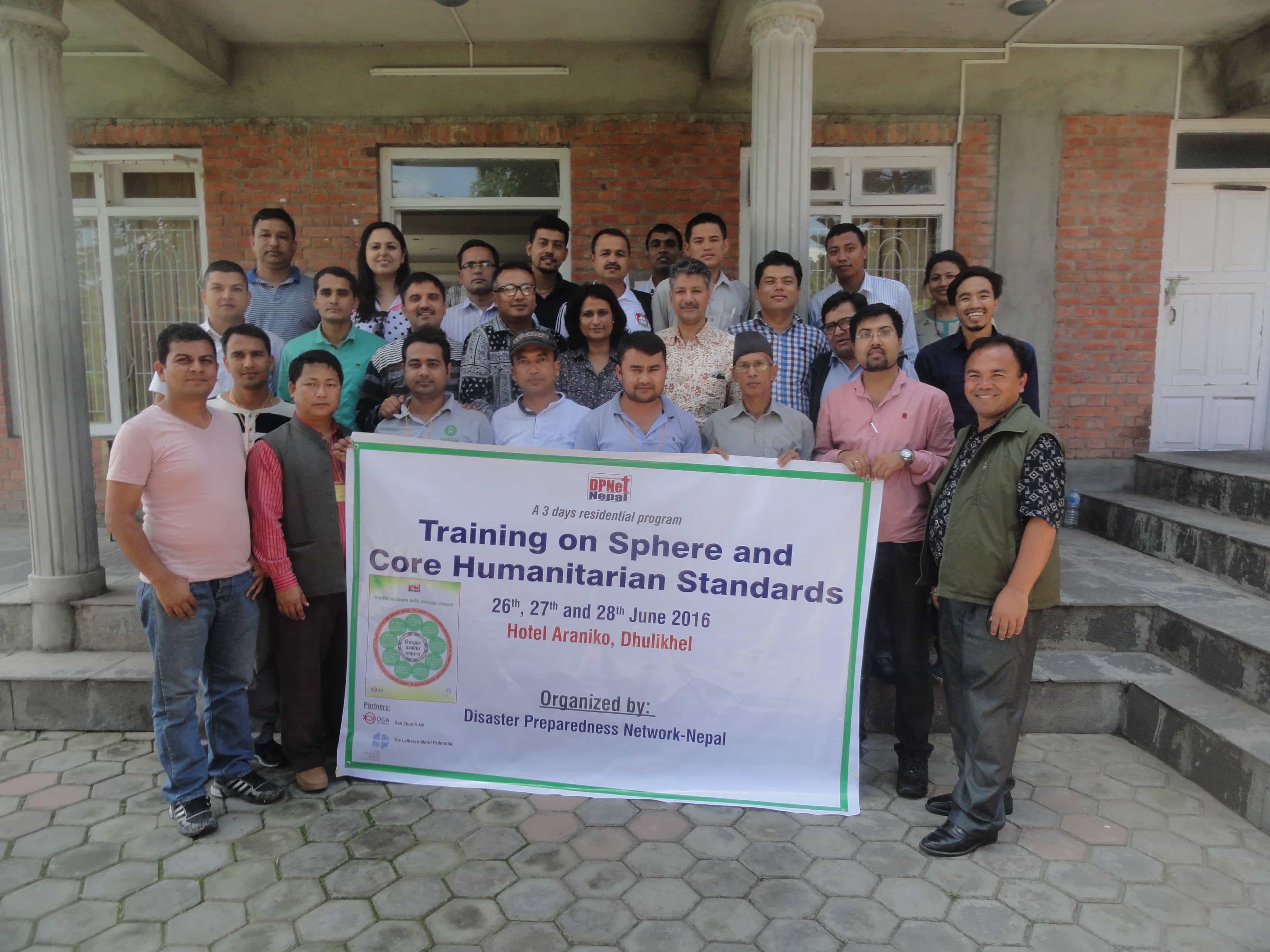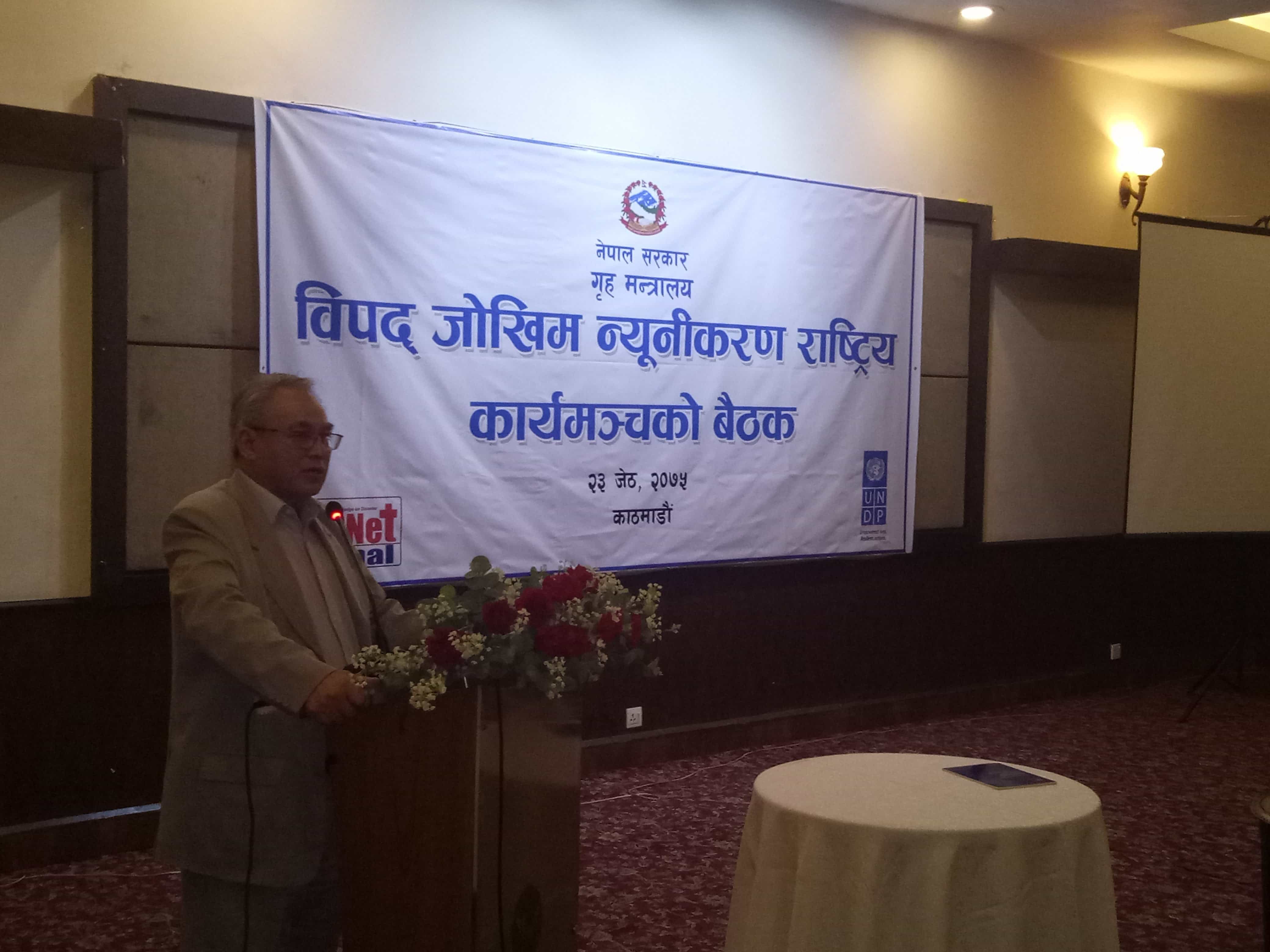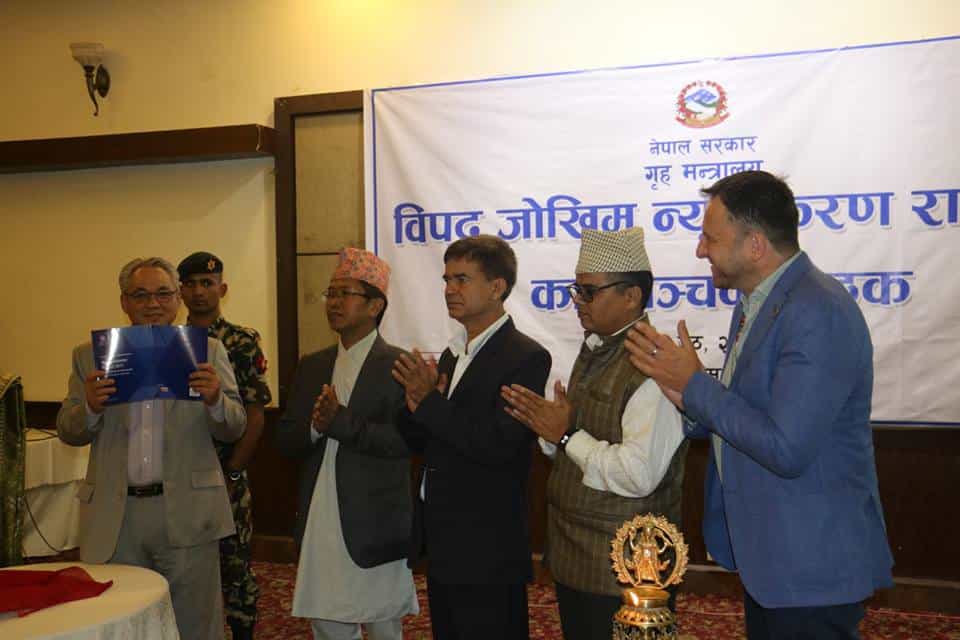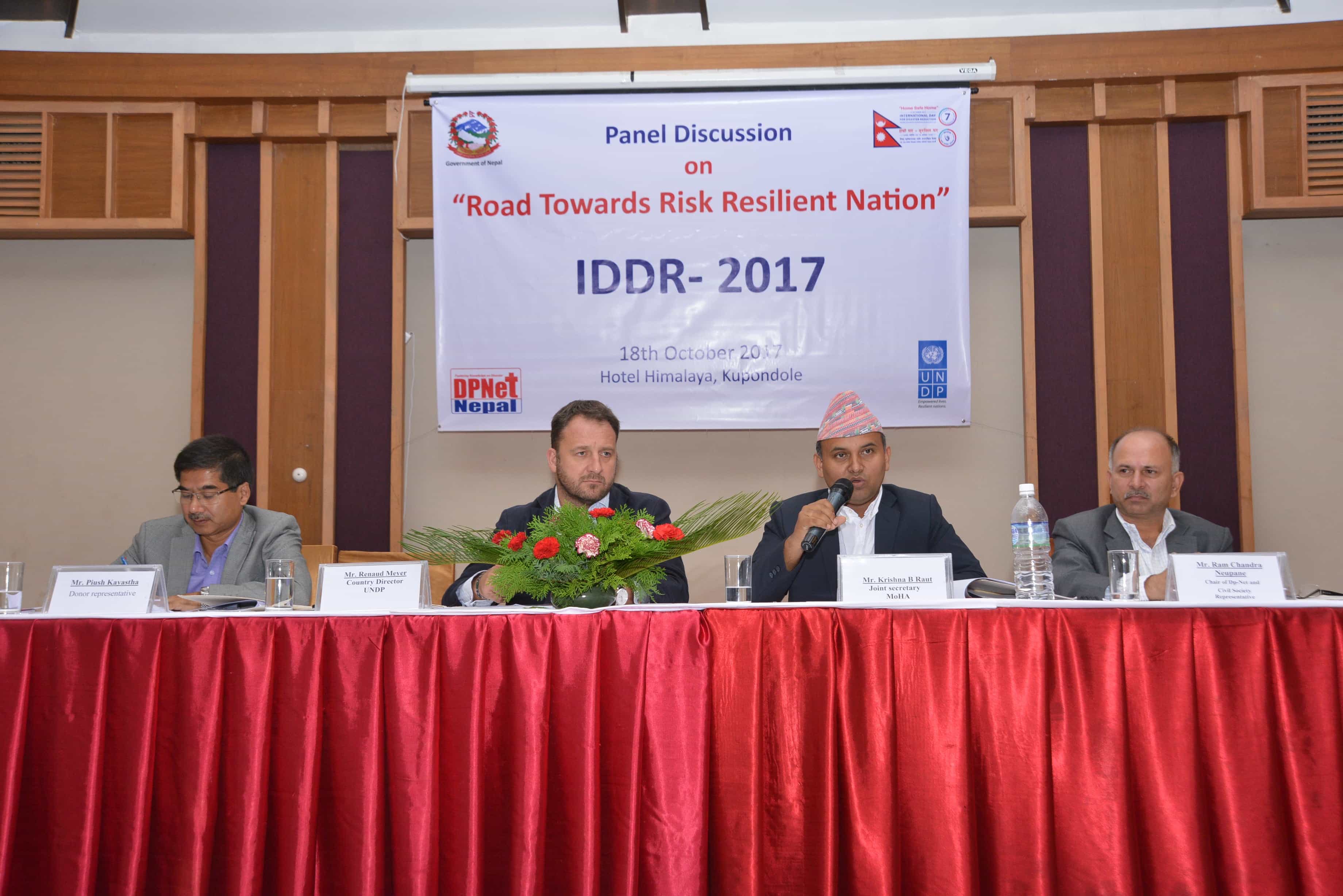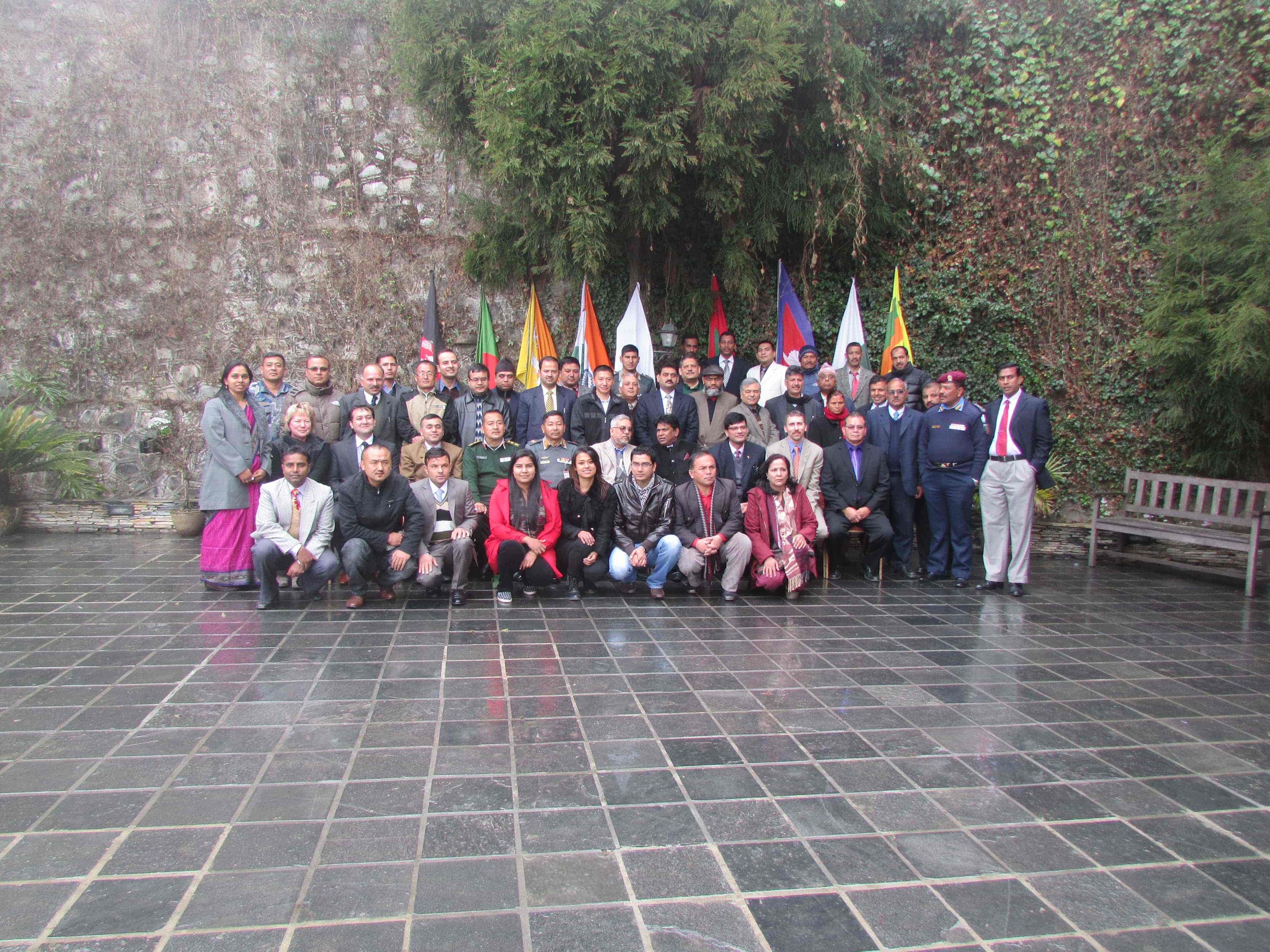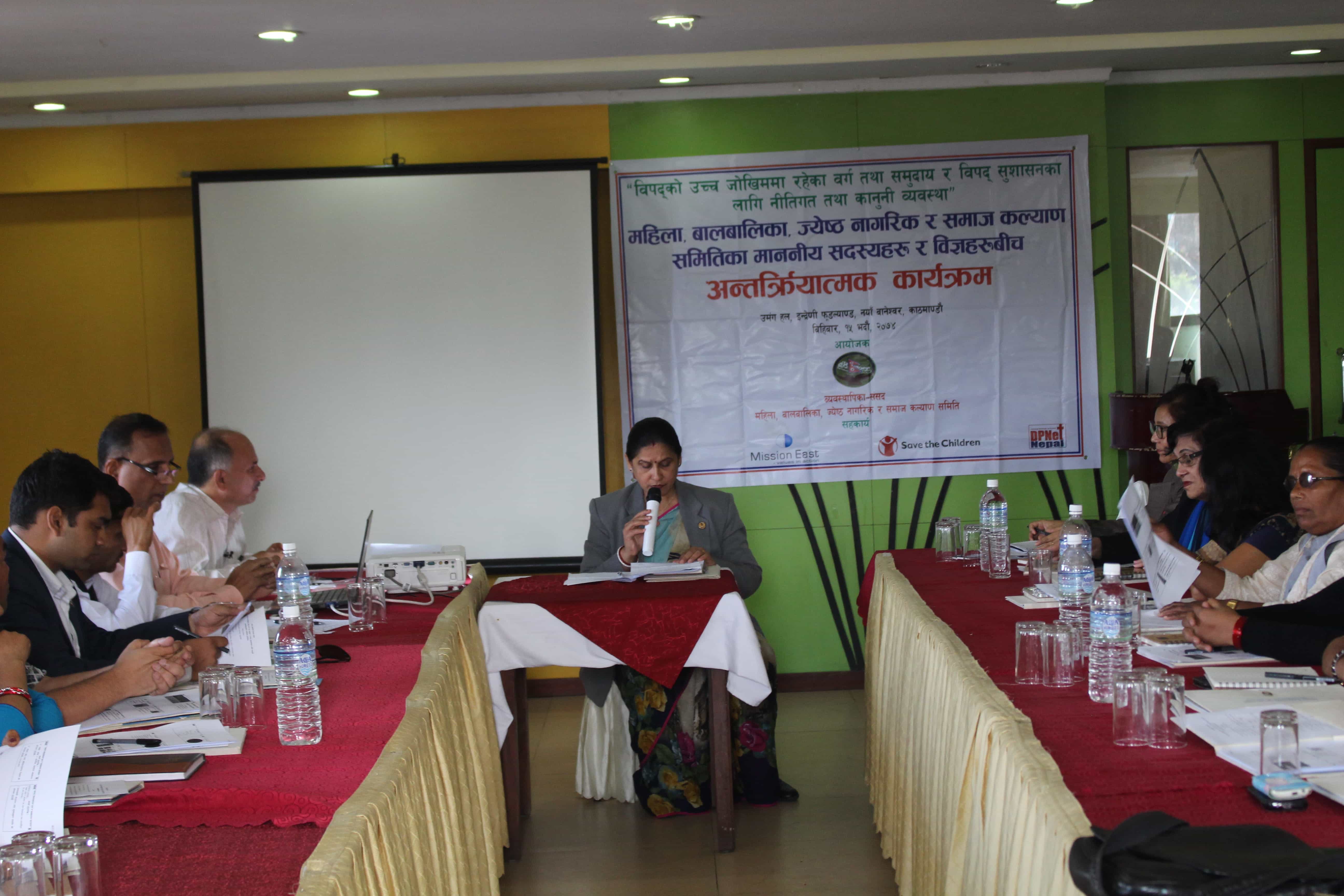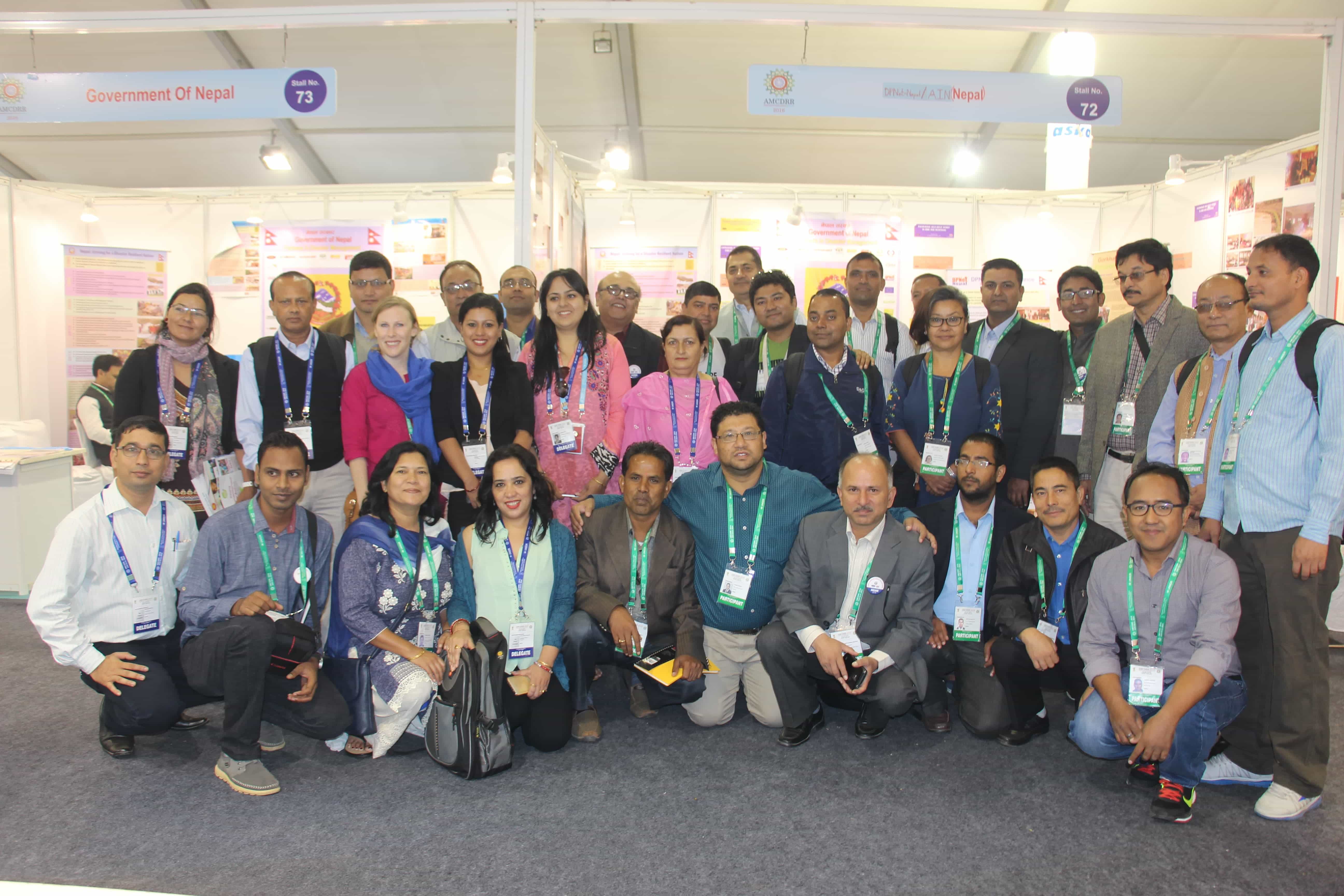Policy Dialogue on Multi-Level Disaster Risk Governance
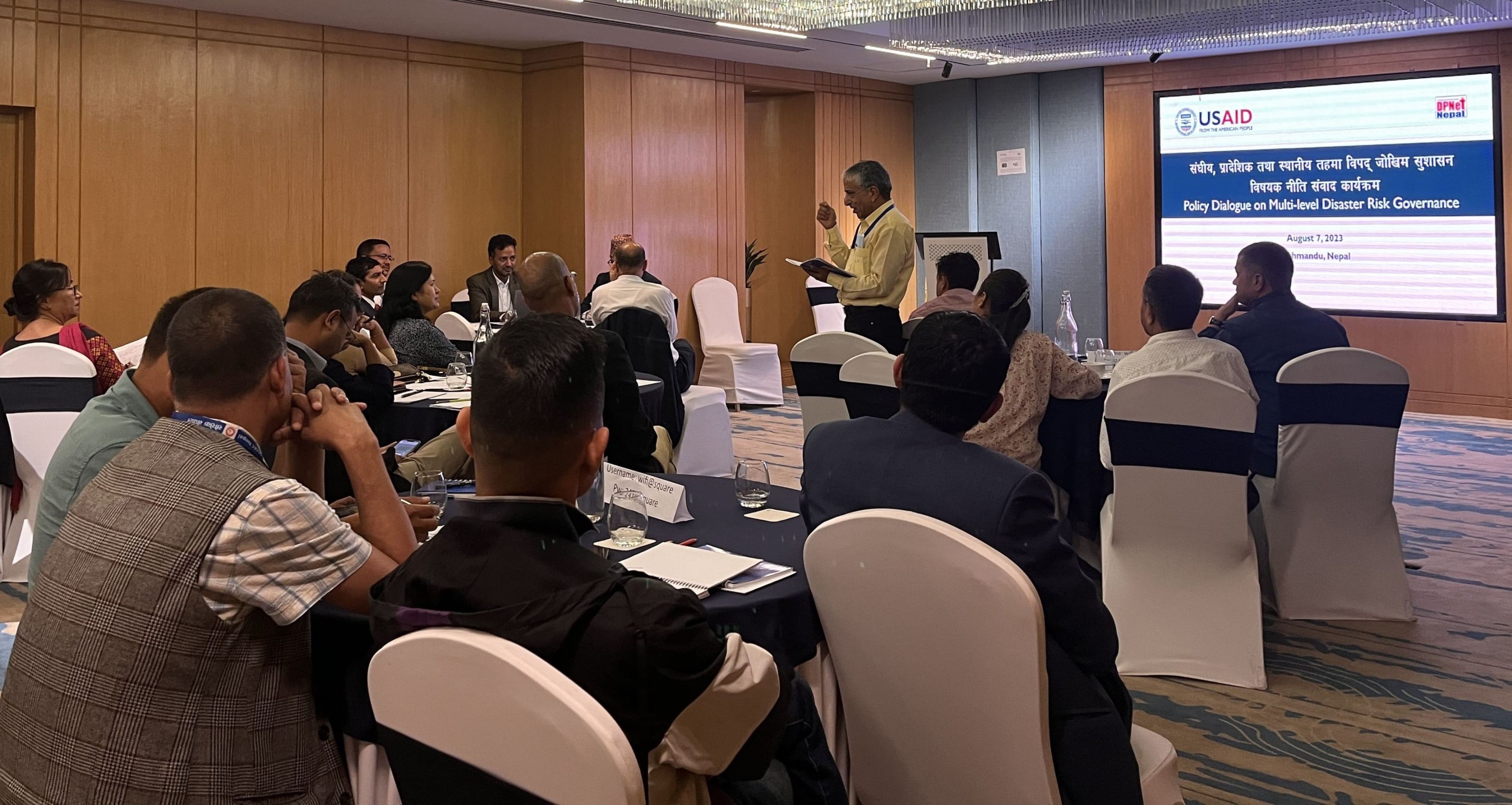
On August 07, 2023, DPNet, in partnership with USAID/Tayar, organized a Policy Dialogue On Multi-Level Disaster Risk Governance. The event, chaired by Dr. Raju Thapa, Acting Chairperson of DPNet, was attended by representatives from government agencies including Mr. Rudra Singh Tamang, Joint Secretary of NDRRMA, Mr. Rishi Raj Acharya, MOFAGA, Mr. Tulsi Prasad Dahal, MoHA, and other personalities from IOM, NARMIN, NRCS, NIA, FNCCI, SOSEC, Blue Diamond Society, MOICS, FSCN, BPWN, UNICEF, NIWF, IGFF, NARMIN, and ADCCN.
Dr. Raju Thapa, Acting Chair of DPNet and Program Chair, started by warmly welcoming all the esteemed guests and participants. He stressed the importance of turning the existing laws and policies for Disaster Risk Reduction (DRR) into practical actions. Referring to the period after the 2015 earthquake, he mentioned that we have a flood of policies but a drought of implementation. He then explained the goals of the program and invited everyone to contribute meaningfully. Despite the creation of numerous policies and laws, the actual application of these measures has fallen short. Since it's 2023, the midterm review period of the implementation of the Sendai Framework for Disaster Risk Reduction, he highlighted the need to closely examine where these efforts have faced challenges. Dr. Thapa encouraged all active participation in the discussion.
Mr. Kedar Neupane, Former Secretary of the Government of Nepal discussed the ongoing situation since 1990 B.S. Referring to Dabik Prakop Ain he pointed out the past belief that disasters were due to sins. Drawing lessons from the Gorkha Earthquake and COVID-19, a range of disaster-related topics were explored. He noted that governance hasn't significantly improved since 1990 BS, with policies existing but their execution remaining weak. He stressed that both natural and human-made disasters occur frequently, underlining the need to prioritize preparedness alongside rescue efforts. Mr. Neupane provided an example of the increasing frequency of bridge damage, emphasizing the importance of incorporating disaster risk governance in development. He also highlighted the necessity to revisit DRG issues and ensure clarity in roles for all levels and organizations.
Mr. Dinanath Bhandari, in his presentation Federalizing DRRM Governance in Nepal: Delineation of Roles, Responsibilities and Accountabilities addressed key governance concerns. In the years around 2018-2020 BS, local and provincial level discussions were limited, rooted in traditional committee patterns. Mr. Bhandari explains that although policies now divide roles, delegation remains incomplete due to overlapping functions and technical capacity gaps. Mr. Bhandari discussed harmonizing constitution article 253 and LGO 2017, underscoring a need for power and technical capacity. He explored international examples from Bangladesh and India, revealing governance strengths and weaknesses. He explains that clear role assignments and accountability are crucial in Nepal and factors like data management and past data availability, capacity gaps, overlaps, and lack of common understanding must be addressed. He emphasized grassroots cooperation, adaptable roles, and local-level empowerment for the betterment of DRRM Governance in Nepal.
Mr. Tulsi Prasad Dahal, Under Secretary, Ministry of Home Affairs presented on Coordinating Roles of Three Tires of Government for Disaster Risk Reduction and Management (विपद् जोखिम व्यवस्थापनका लागि संघ, प्रदेश र स्थानीय तह बिचको सहकार्य र समन्वय) Mr. Dahal highlighted the past experience of a tornado in Madhesh Province as a unique disaster, causing confusion over the responsible agency's response. He explains that MoHA is addressing such challenges by drafting a policy guideline. The guideline aims to clarify roles and responsibilities for disaster management in accordance with the Constitution, DRRM Act, and relevant provincial and local acts. It was developed in response to the tornado incident and seeks to enhance coordination, avoid duplication, and ensure effective disaster response. Objectives of the guideline include promoting coordination and minimizing casualties, damage, and losses. Categorizing hazards is crucial, emphasizing impact-based forecasting. The guideline outlines four categories: Normal Scale, Medium Scale, Large Scale, and Mega Scale, with defined roles for each government level. He explains that, referring to legal provisions local governments have primary DRRM responsibility, while the other two levels of government handle residual risks and exceed capacities. The BIPAD PORTAL contains valuable data, although with limited awareness. Mr. Dahal highlighted India's provincial government's independence in disaster management and evacuation. He stressed clear role demarcation among ministries and agencies and the importance of provincial government roles. Mr. Dahal shared his experience of widespread reliance on MoHA and NDRRMA for all disaster types. Ultimately, the policy guideline aims to enhance collaboration and define roles for effective DRRM across government levels.
Mr. Rishi Raj Acharya, Under Secretary at the Ministry of Federal Affairs and General Administration (MOFAGA), presented on the topic Strengthening Federalism and DRRM Policy Provision in Nepal (संघीयताको सवलीकरणमा विपद् जोखिम व्यवस्थापन सम्बन्धी नीतिगत व्यवस्था). Initiating his presentation, Mr. Acharya highlighted the significance of inter-ministerial and inter-agency coordination, emphasizing the importance of mutual cooperation between different levels of government and agencies for successful federalism implementation. He commended the local governments for their commendable role in managing the challenges posed by the COVID-19 pandemic in Nepal. Mr. Acharya focused on policy provisions related to DRRM in Nepal, highlighting key documents and legislations such as the Constitution of Nepal, the DRRM Act of 2074, the DRRM Regulation of 2076, the Local Government Operation Act of 2076, the DRRM National Policy of 2075, the DRRM National Strategic Plan of Action (2018-2030), SDGs, the 15th National Plan, and the Environment Protection Act of 2076. He shared MOFAGA's long-term plan, which comprises four pillars including Federalism Implementation and Facilitation, Human Resource Management for Public Service, Facilitation in Local Infrastructure and Development, and Service Delivery and Good Governance. He emphasized MOFAGA's support for localization efforts through policy support and the development of various model documents, including the Model DRRM Act, strategy, Standard Operating Procedure for Local Emergency Operations Centers (LEOCs), Local Disaster and Climate Resilient Plans (LDCRP), Risk Sensitive Land Use Plans (RSLUP), Urban DRR Toolkit, Local Government Institutional Self-Assessment Framework (LISA), and Municipal Disaster Risk Governance Assessment Tool including the need to strengthen the capacities of local levels, establish clear guidelines for DRRM fund mobilization, enforce building codes and safe construction practices, and promote effective land use planning. Mr. Acharya identified the opportunity for improved outcomes through better coordination and collaboration among the three levels of government and emphasized the importance of strengthening the data system and harmonization efforts.
The expert dialogue covered several key aspects of disaster risk reduction and management (DRRM). The importance of enhancing infrastructure and response systems, particularly road and airline connectivity, during disasters, was highlighted. Mr. Bhojraj Ghimire stressed cluster-specific response, considering the geographical intensity and sectorial assessments. Integrating disaster risk reduction (DRR) with climate change adaptation (CCA) for essential needs like food and aiding damaged houses emerged as a priority according to Ms. Namita Paudel. Enhanced coordination among government agencies, especially MoHA's pivotal role, and a whole-of-government approach for effective pre, during, and post-disaster roles were emphasized. Collaboration among government levels and the role of insurance in disaster management were discussed by Mr. Nirmal Adhikari. Inclusivity in awareness programs, demographic considerations, and the importance of local-level challenges were addressed by Ms. Saru Joshi and Ms. Pratigya Neupane, respectively. Strong coordination in mega-disasters, such as maintaining supply chains, was highlighted by Mr. Sujan Neupane, while Mr. Prem Awasthi stressed the need for better governance and emergency response systems.
Mr. Tirtha Raj Joshi, Deputy Chief of Party at USAID-TAYAR Nepal, expressed gratitude to all participants and presenters, acknowledging the value of the policy dialogue. He found the discussions fruitful and welcomed the guidance and suggestions shared by everyone involved.
Dr. Raju Thapa emphasized the need for better collaboration and coordination among different levels of government, along with a clear delineation of roles. He stressed for enhancing insurance systems, promoting inclusivity, and considering the evolving demographic situation were highlighted as important steps. He advocated to strengthen infrastructure and response systems, along with proactive efforts for emergency management.
